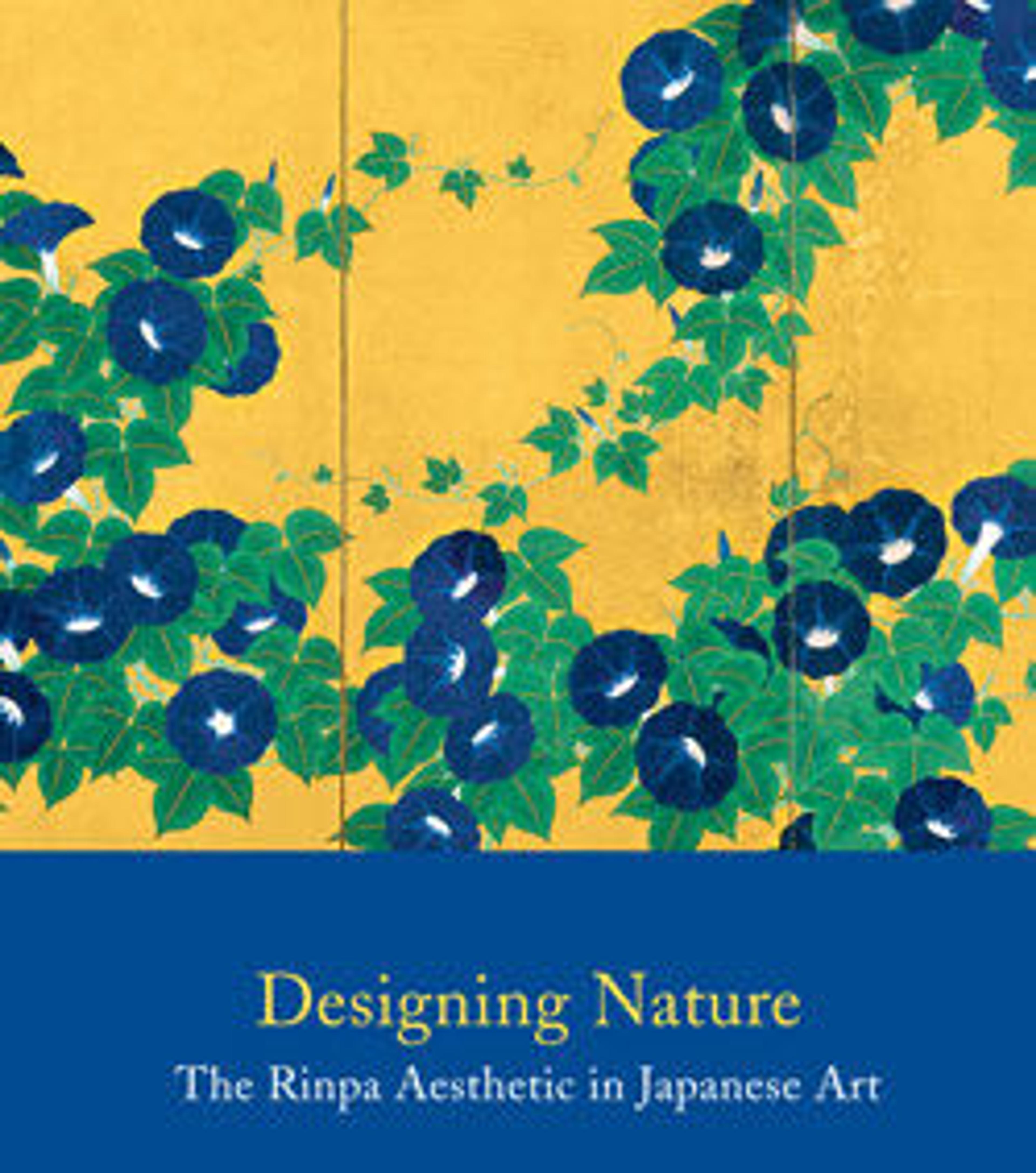Anthology of Japanese and Chinese Poems (Wakan rōeishū) with Underpainting of Arrowroot Vines
Thirty-six poem cards; ink, color, gold, and silver on paper Swaying arrowroot vines (kuzu) in autumnal decline serve as the background for an array of Japanese and Chinese poems inscribed on poem cards (shikishi). In East Asia the arts of poetry, calligraphy, and painting are considered the “three perfections,” and since the ninth century, the Japanese have decorated screens with paintings and poems inscribed in fine calligraphy.
Three pairs of shikishi are pasted on each panel: each pair is inscribed with a couplet from a Chinese poem at the right and a waka (a thirty-one-syllable Japanese-style poem) at the left. The poems share common themes such as the four seasons, bamboo, pines, or clouds. The idiosyncratic style of calligraphy, with hooks at the ends of strokes and the tall, elongated profile of the characters, is attributable to the nobleman-calligrapher Konoe Nobuhiro (1599–1649).
Three pairs of shikishi are pasted on each panel: each pair is inscribed with a couplet from a Chinese poem at the right and a waka (a thirty-one-syllable Japanese-style poem) at the left. The poems share common themes such as the four seasons, bamboo, pines, or clouds. The idiosyncratic style of calligraphy, with hooks at the ends of strokes and the tall, elongated profile of the characters, is attributable to the nobleman-calligrapher Konoe Nobuhiro (1599–1649).
Artwork Details
- 伝近衛信尋書・伝長谷川宗也絵 葛下絵色紙貼付 『和漢朗詠集』 屏風
- Title: Anthology of Japanese and Chinese Poems (Wakan rōeishū) with Underpainting of Arrowroot Vines
- Calligrapher: Konoe Nobuhiro (Japanese, 1599–1649)
- Artist: Underpainting attributed to Hasegawa Sōya (Japanese, born 1590)
- Period: Edo period (1615–1868)
- Date: early 17th century
- Culture: Japan
- Medium: Six-panel folding screen; ink and color on gilt paper
- Dimensions: Image: 65 3/4 in. × 12 ft. 4 in. (167 × 375.9 cm)
- Classification: Paintings
- Credit Line: Purchase, several members of The Chairman's Council Gifts, 2001
- Object Number: 2001.423
- Curatorial Department: Asian Art
Audio
8890. Painting of Arrowroot Vines with Thirty-six Poems Quoted from the Wakan rōeishū (Anthology of Japanese and Chinese Poems)
0:00
0:00
We're sorry, the transcript for this audio track is not available at this time. Please email info@metmuseum.org to request a transcript for this track.
More Artwork
Research Resources
The Met provides unparalleled resources for research and welcomes an international community of students and scholars. The Met's Open Access API is where creators and researchers can connect to the The Met collection. Open Access data and public domain images are available for unrestricted commercial and noncommercial use without permission or fee.
To request images under copyright and other restrictions, please use this Image Request form.
Feedback
We continue to research and examine historical and cultural context for objects in The Met collection. If you have comments or questions about this object record, please contact us using the form below. The Museum looks forward to receiving your comments.
